In these weeks of self-isolation, we are all looking for ways to keep ourselves amused. Why not try a game of croquet? Many of us will have a forgotten set lurking in a corner of the garage, just waiting for a day like today.
The game of croquet as we know it appeared in the mid-1800s but has earlier roots with sports that are collectively known as ground billiards (golf is another one). It possibly evolved from a French game known as paille-maille that was played in the 1600s. It is thought that the Irish, who had frequent contact with the northern coast of France, brought it to England around 1850.
Whatever its origins, the term croquet first appeared in print in 1856 on a set of rules written by the British toy dealer Isaac Spratt. Where he got the name from remains a mystery. It might have been a term used by players at that time or it could have been one he invented that simply sounded French.
Croquet became extremely popular during the 1860s. It was a sport that men and women could respectably play together and it was also a game that could include children. In an article on games in Auckland’s Daily Southern Cross on 24 January 1862, the author delighted in the fact that young people “abandon themselves to sports unknown to the youth of their elders”.
Croquet, in particular, was a game where the sexes could compete equally. Women gained a reputation as being particularly eager for vengeance against their rivals, as this cartoon from 1861 in the magazine Punch illustrates.

In Canterbury, croquet equipment was imported into the settlement as early as 1864 and merchants were able to buy their stock through auctions. It is interesting that in this advertisement from the Press, croquet is referred to specifically as a game for ladies.
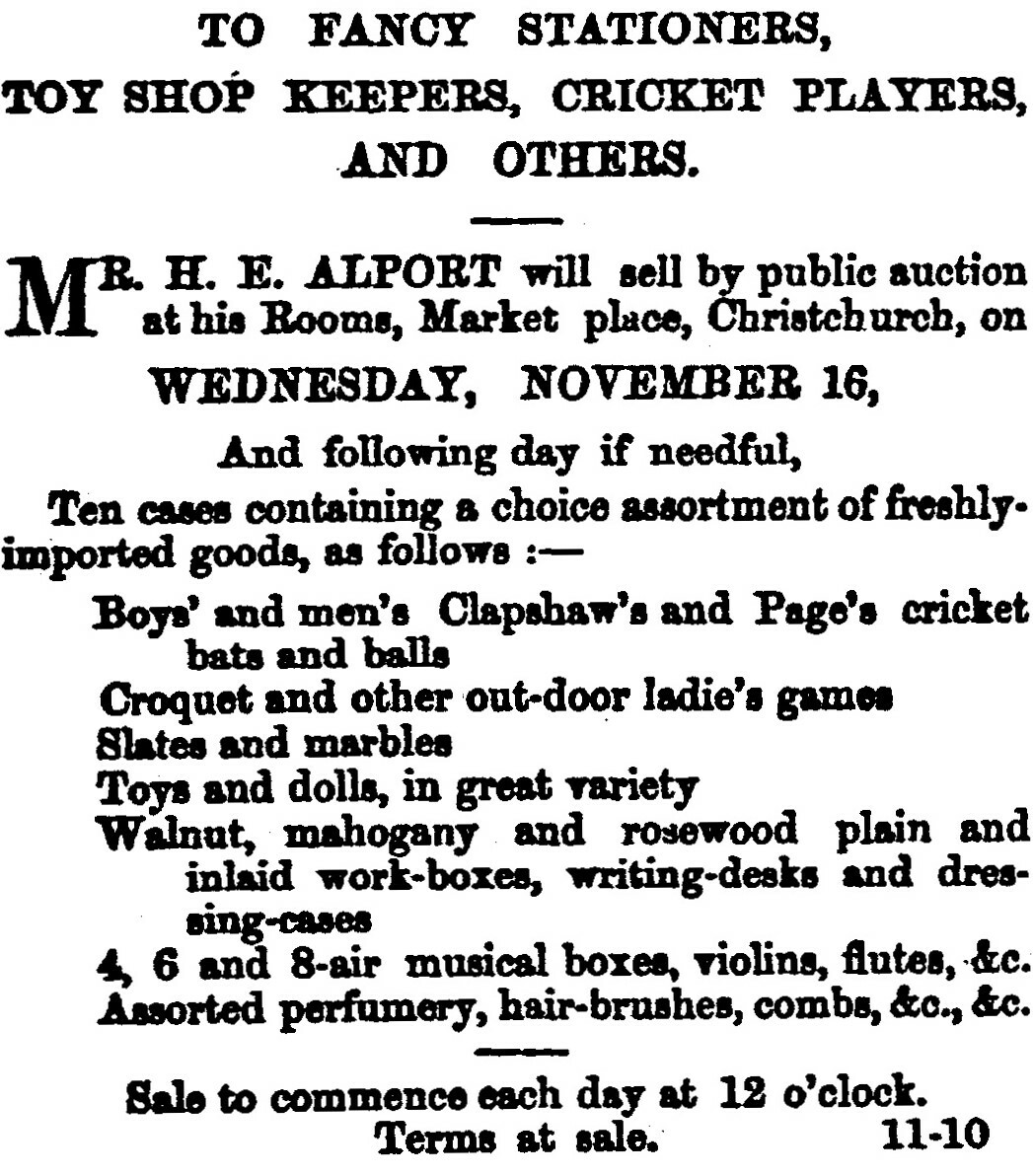
In 1864, a group of young Christchurch women approached Mr Cole of the Canterbury Horticultural Society about setting up a croquet lawn in the Botanic Gardens but were refused. Without a public ground, players had to establish their own playing lawns at home. Such a feature could be a selling point for a property, as seen from this advertisement for a Christchurch residence. Of course, with half an acre of land, there would be plenty of room for croquet.
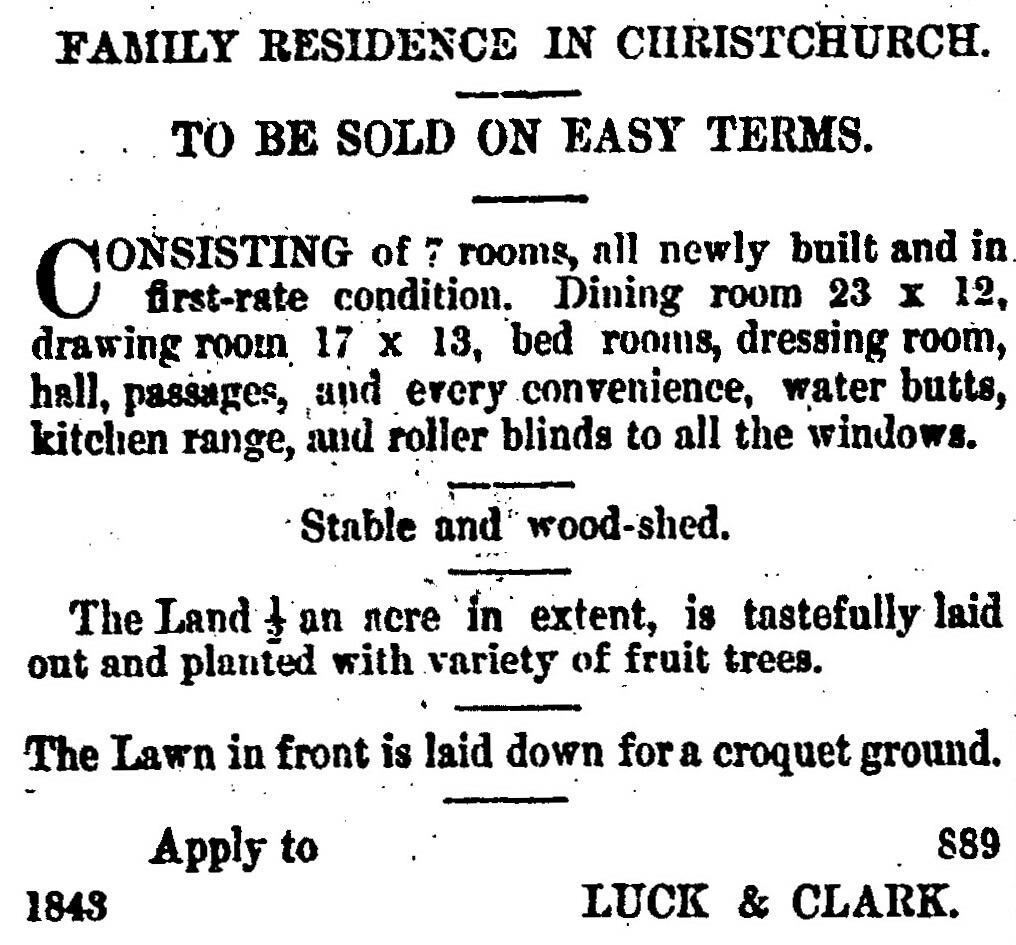
Dr Alfred Charles Barker, an avid amateur Christchurch photographer in the 1860s and 1870s, took several photographs of his family and others at play. A photograph of a group at Hoon Hay in 1868 shows a large, somewhat manicured lawn where men, women and a girl play together while a dog watches.
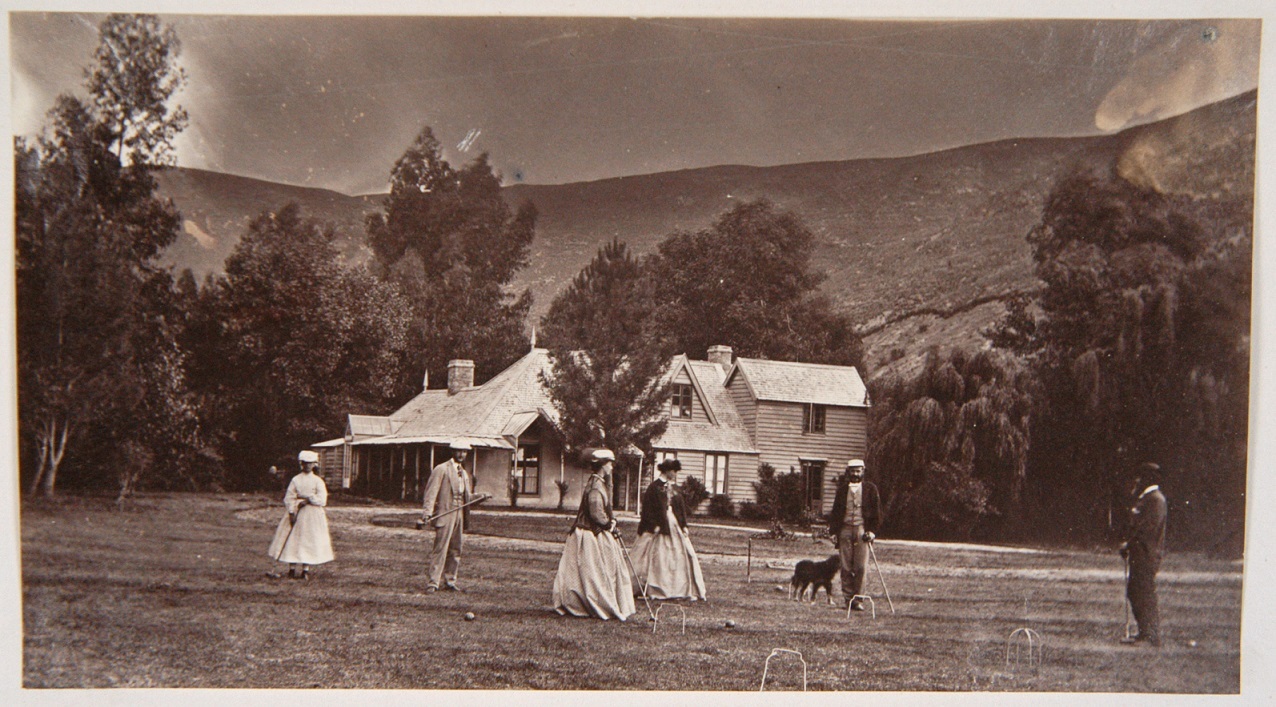
Not everyone had the luxury of such a spacious set up. At Barker’s own property, located on the edge of Cathedral Square in Christchurch, the garden was much smaller and rougher. A photograph he took of his family playing in their yard shows a lawn that must have been challenging and frustrating to play on.
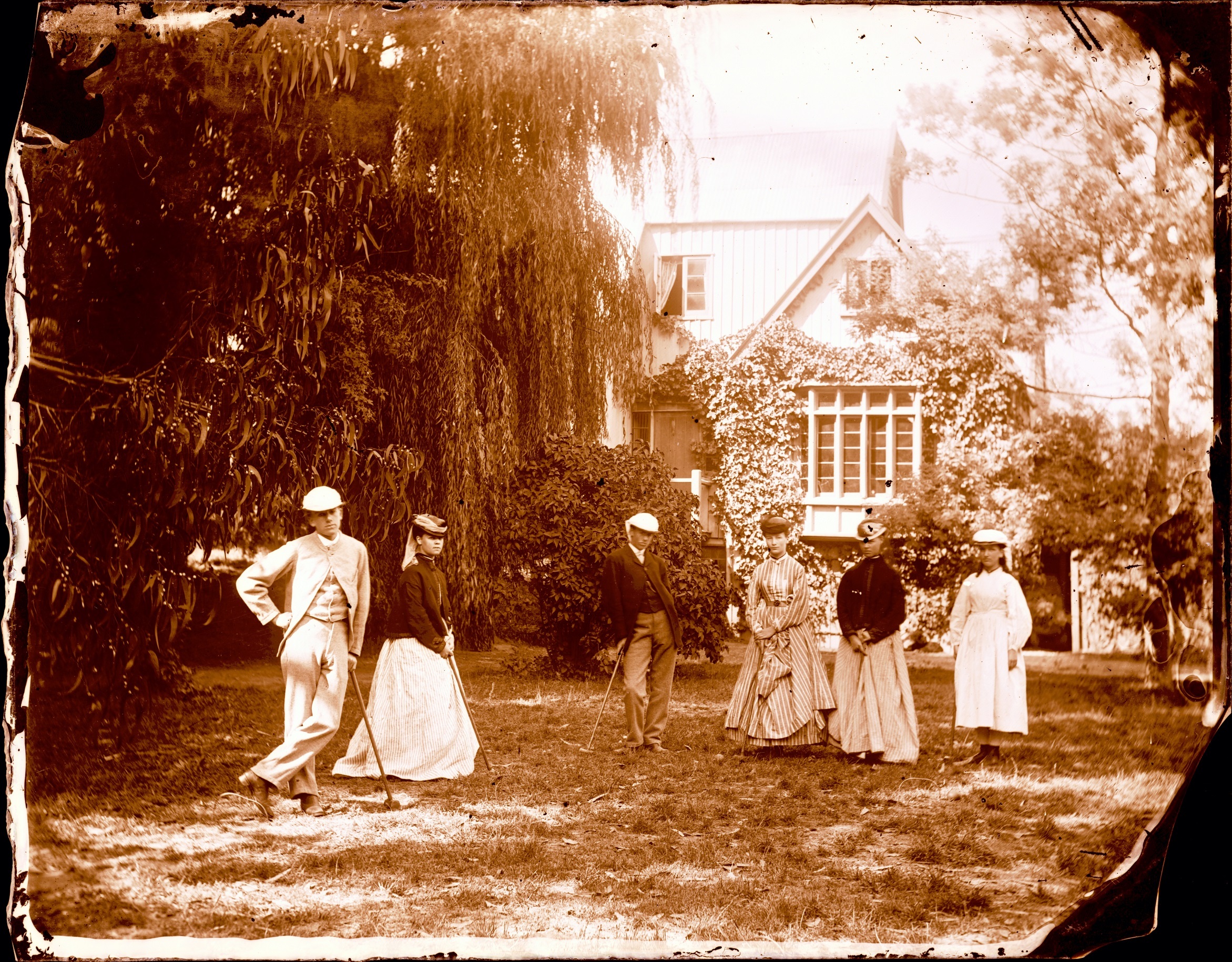
With the rise of croquet and other sports for women, fashions were modified. Long skirts were problematic and one solution was simply to raise them. But how to do this modestly? The Balmoral Petticoat proved to be the answer. The petticoat was decorated at the hem so that when the overskirt was raised for sporting activities such as croquet, skating or promenading, the petticoat appeared to look like another skirt rather than the underwear that it actually was. Women’s fashion magazines featured the new look.
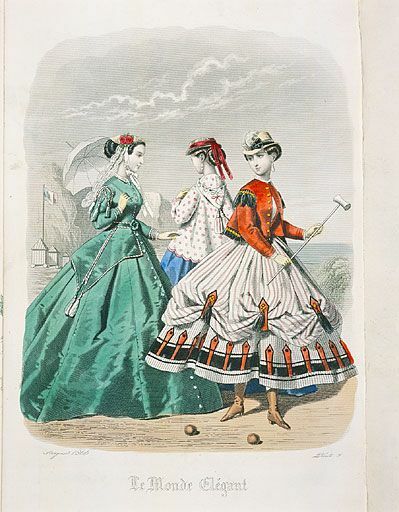
In Barker’s photograph of his children playing at home, his daughter has pulled up her skirt in a similar manner, revealing an underskirt in the same material.
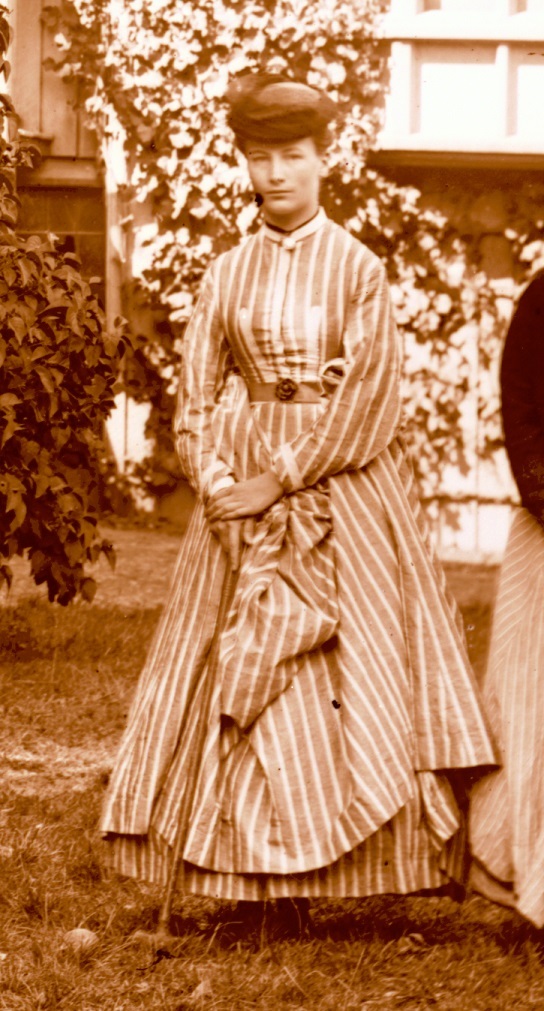
Croquet continued to be a popular pastime until lawn tennis eclipsed it in the late 1870s. However, the sport continued to be played recreationally at home and at newly-established croquet clubs that were often part of tennis clubs. Several clubs formed in Christchurch and Canterbury Museum holds objects and archives from the Redcliffs and Cashmere clubs.

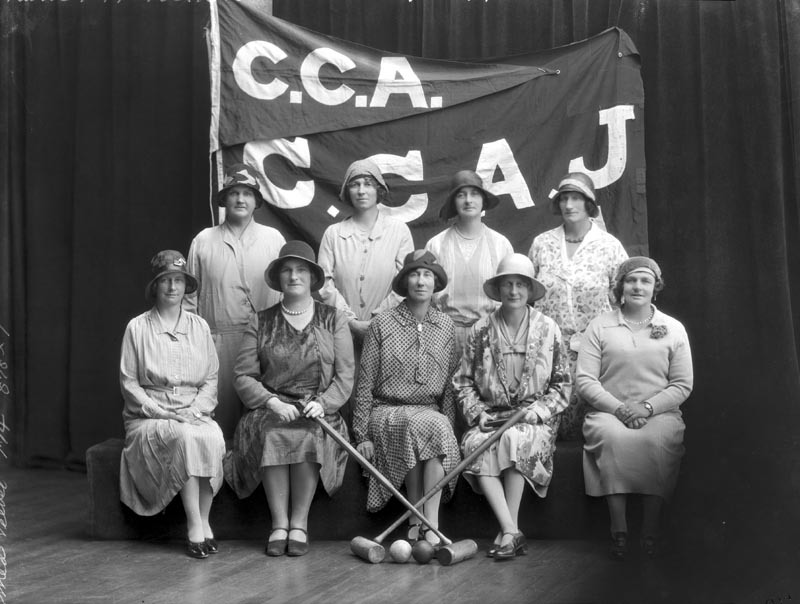
If you weren’t able to find that dusty croquet set in your garage, there are several croquet clubs around Canterbury and croquet equipment for home use is available at a variety of retailers. Once the lockdown is over, give it a go!





